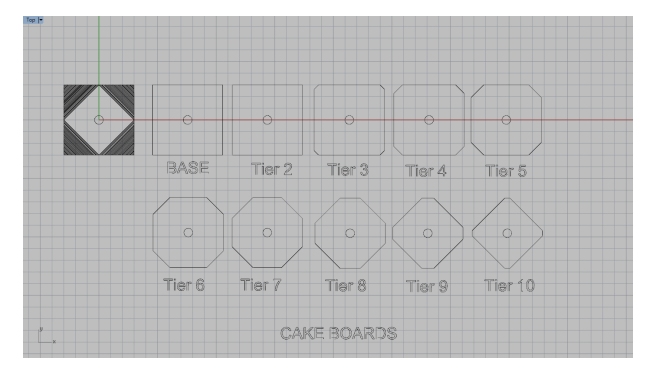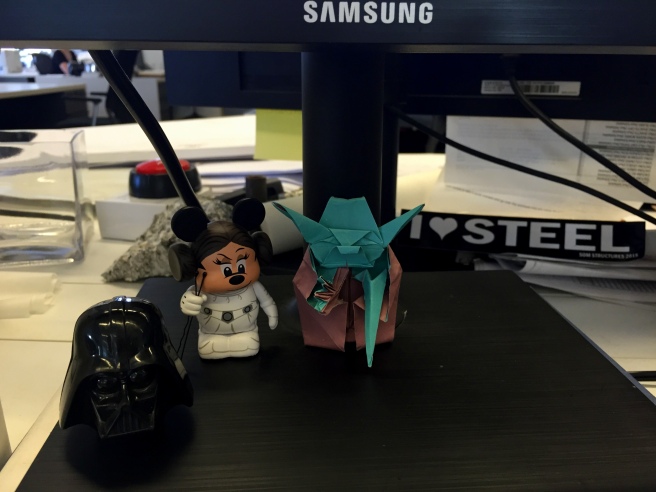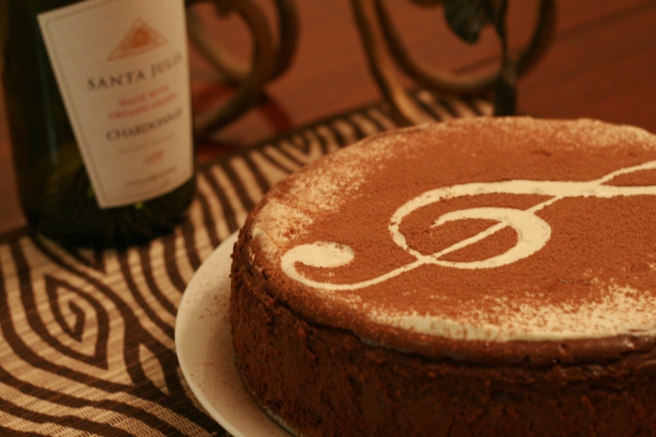After days of deliberation for the first tower cake model (or rather, days of inaction and 5 minutes of speculation), I chose 1 World Trade Center, appropriately named as “Tower One”. Designed by the darling of SOM, David Childs, it is geometrically regular, yet not a straight extrusion, perfect for experimenting with creating the form. Its geometry is also readily available on the internet. Shortly after powering on my Google-fu, I found a detailed 3D SketchUp model of the entire World Trade Center site. Thanks ATorpie!

First order of business: I recreated a cleaner geometry in Rhino 5 and scaled the tower from 1368′ roof height down to 40″, approximately 1:400 scale. The crown will be addressed in a separate post (when I figure out how to make it). The base of the cake is 6″ per side, and tapers to 4.25″ per side at the top – a pretty slender cake! For comparison, standard cakes are 8″ or 9″ diameter. The bottom of tiered cakes can be as large as 20″.
Traditional stacked cakes have hidden dowels within each tier to support the tier above, and to help keep cakes level (see image below). A center dowel joins the tiers together. This creates a lot of wasted cake that cannot be served, however. Since the tower cake is small in cross-section, each tier can be cantilevered from the center dowel, supported on pegs held by drilled holes in the dowel. The cake board supporting each tier need to be made from stiffness material to minimize deflection.

A typical tier, 4″ tall, will consist of 3 layers of 1″ thick cake, with 1/4″ thick icing in between. The 40″ cake is divided into 10 tiers, with some atypical tiers at the base and top to simplify geometry. To further maximize the nerdiness of this post, I used a simple Grasshopper script to generate the intersection at each layer, then hit the “bake” button… But no cake magically materialized. One day, Grasshopper, one day.



The layers representing the cake boards are then isolated and laid out. Presto! Ready for laser cut.
Where is the cake in this cake blog, you say? A mock-up of a typical tier coming up…in T minus n days, where n is a function of Lulu’s resolve to accomplish her 2017 resolutions.
Happy New Year everyone.











